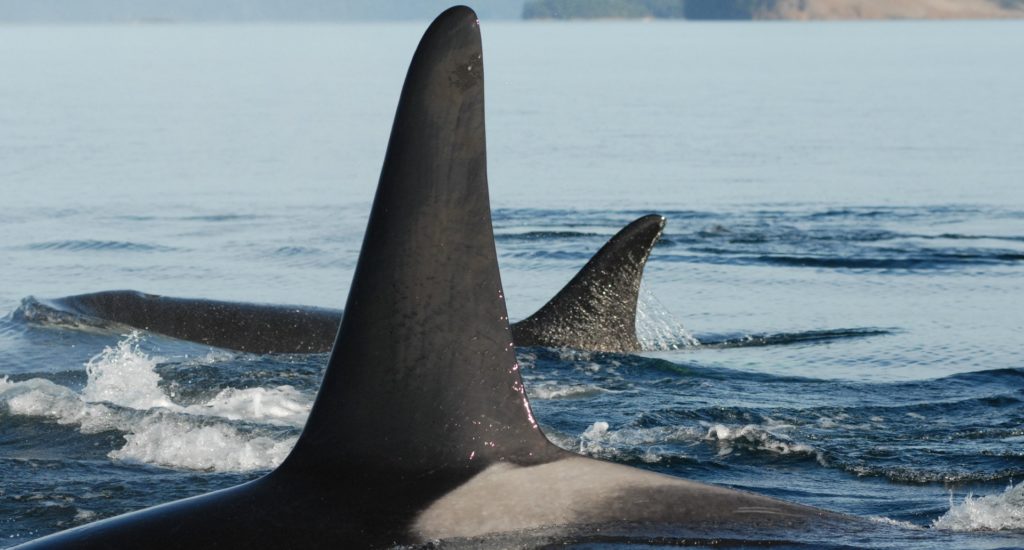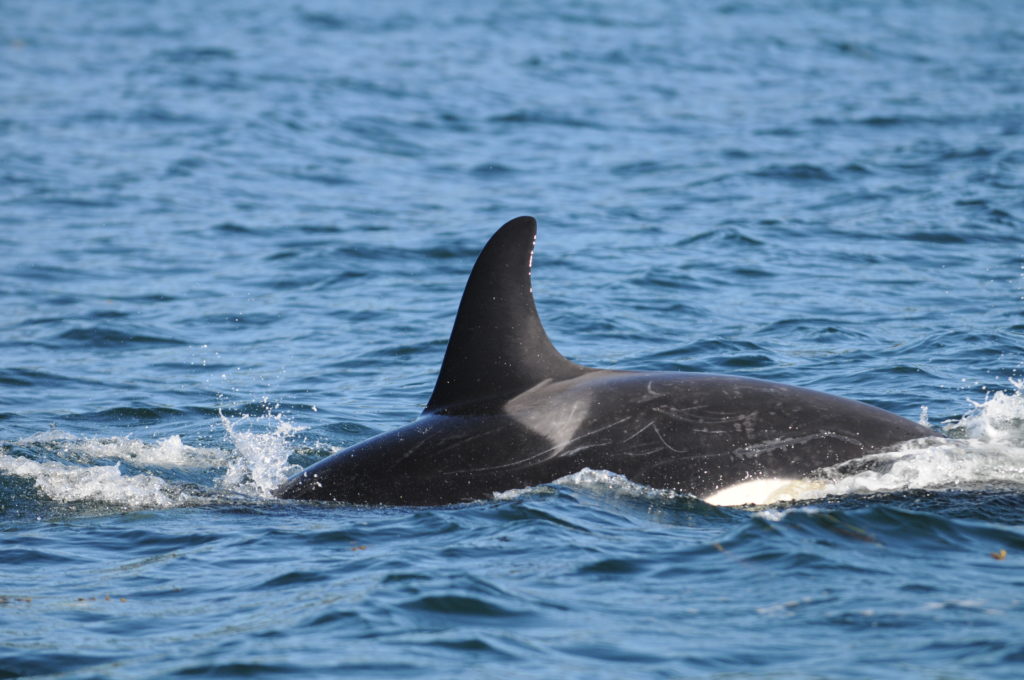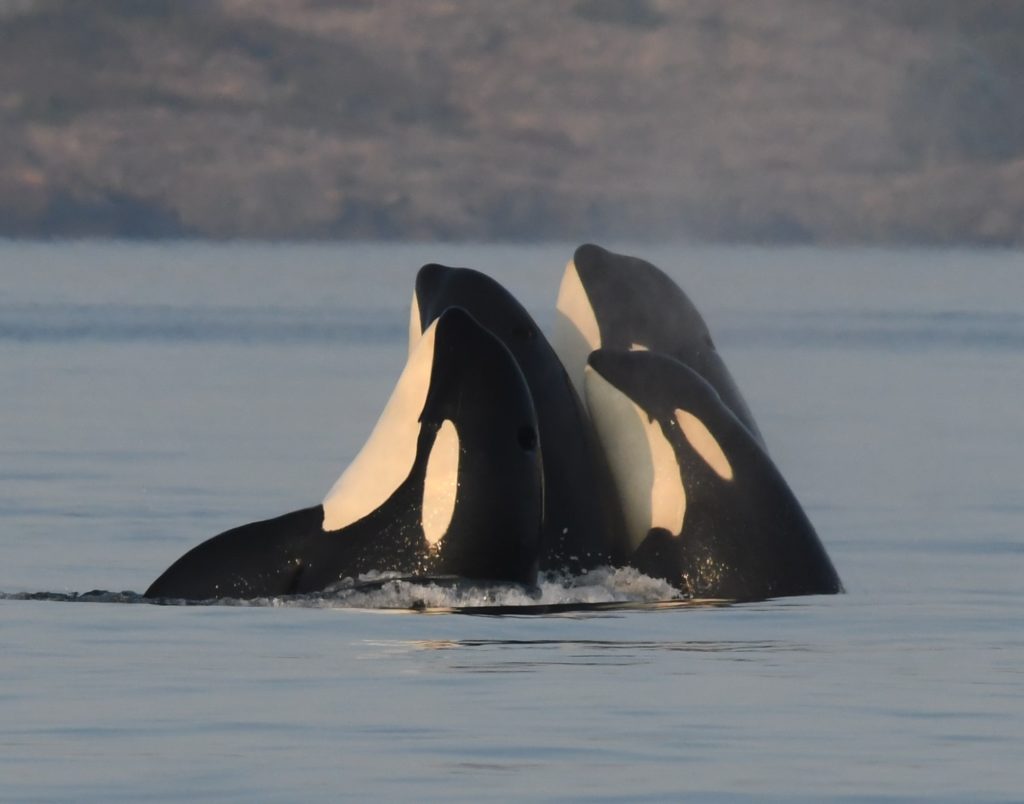Male killer whales protected by post-menopause mothers

An adult male with travelling with its post-reproductive mother. Credit David Ellifrit / Center for Whale Research
Post-menopause female killer whales protect their sons – but not their daughters – from fights with other whales, new research shows.
Scientists studied “tooth rake marks” – the scarring left when one whale scrapes their teeth across the skin of another – and found males had fewer marks if their mother was present and had stopped breeding.
Only six species – humans and five species of toothed whales – are known to experience menopause, and scientists have long been puzzled about why this occurs.
The new study – by the universities of Exeter and York, and the Center for Whale Research – adds to growing evidence that post-menopause females boost the life chances of their offspring, especially males.
“We were fascinated to find this specific benefit for males with their post-reproductive mother,” said lead author Charli Grimes, from the Centre for Research in Animal Behaviour at the University of Exeter.
“These males had 35% fewer tooth marks than other males.
“For males whose mother was still breeding, we found no evidence that her presence reduced tooth rake injuries.
“We can’t say for sure why this changes after menopause, but one possibility is that ceasing breeding frees up time and energy for mothers to protect their sons.
“Tooth rake marks are indicators of physical social interactions in killer whales and are typically obtained through fighting or rough play.”

The study is part of long-term research on “southern resident” killer whales, which live off the Pacific coast of North America.
The body of evidence suggests that – instead of competing with their daughters to breed – female killer whales have evolved to pass on their genes by helping their children and grandchildren.
Commenting on why females focus efforts on their sons, Grimes said: “Males can breed with multiple females, so they have more potential to pass on their mother’s genes.
“Also, males breed with females outside their social group – so the burden of raising the calf falls on another pod.”
Southern resident killer whales feed on salmon and have no natural predators apart from humans, so tooth marks on their skin can only be inflicted by other killer whales.
This may happen within social groups, or when two pods meet.
Commenting on how mothers protect their sons, Professor Darren Croft, also from the University of Exeter, said: “We can’t say for sure.
“It’s possible that the older females use their experience to help their sons navigate social encounters with other whales.
“They will have previous experience of individuals in other pods and knowledge of their behaviour, and could therefore lead their sons away from potentially dangerous interactions.
“The mothers might also intervene when a fight looks likely.”

Professor Croft added: “The similarities with humans are intriguing.
“Just as in humans, it seems that older female whales play a vital role in their societies – using their knowledge and experience to provide benefits including finding food and resolving conflict.”
Professor Dan Franks, from the Department of Biology at the University of York, said: “Our findings offer captivating insights into the role of post-menopausal killer whale mothers.
“They perform protective behaviour, reducing the incidence of socially inflicted injuries on their sons.
“It’s fascinating to see this post-menopausal mother-son relationship deepening our understanding of both the intricate social structures in killer whale societies and the evolution of menopause in species beyond humans.”
The study was supported by the Natural Environment Research Council.
The paper, published in the journal Current Biology, is entitled: “Postreproductive female killer whales reduce socially inflicted injuries in their male offspring.”



